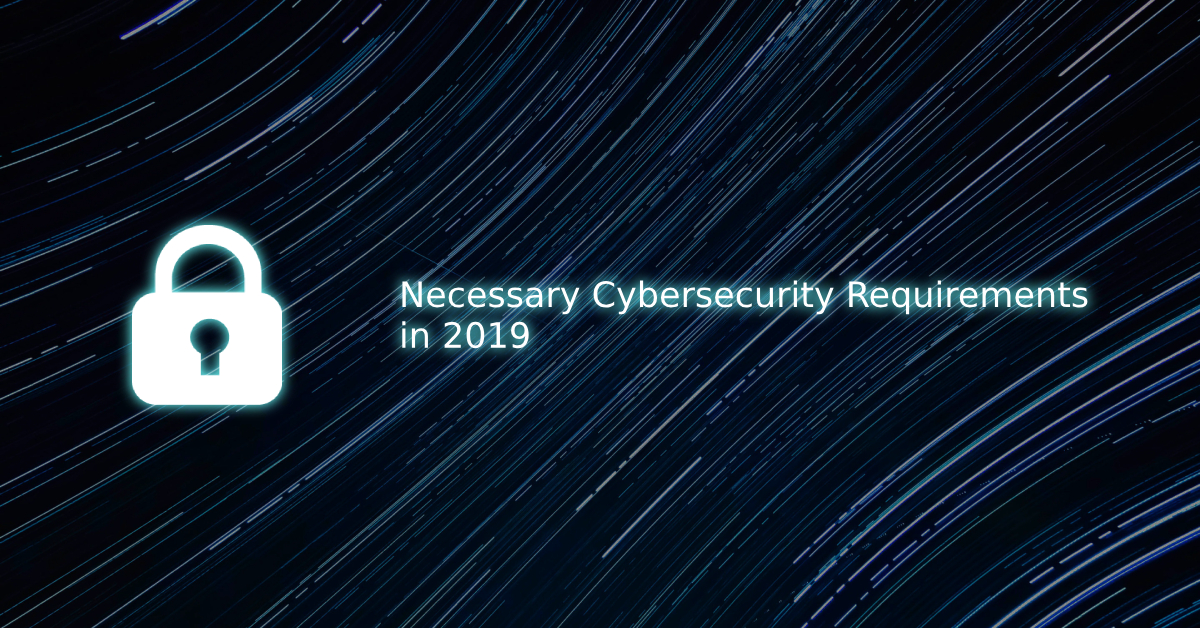
Necessary Cybersecurity Requirements in 2019
Over the years, cybercrime is a fast-paced world where the bad actors constantly network, research and test out new tactics to increase the scale of attack. It is growing at such an alarming rate that CIOs and business owners are constantly concerned about the data security and unpleasant breaches in their organizations. With cyber attacks becoming more complex and regularly exposing the new vulnerabilities, many CSos and COs around the globe are spending billions of dollars preparing themselves for the worst. Heres a few shifts you should keep an eye on:
To learn from the consequences of past events in order to help predict and identify cybersecurity threats is the ability of AI or Machine learning software. AI is estimated to be used by all the cyber security professionals and even they are concerned that hackers will use AI to launch even more sophisticated cyber attacks. AI is used to automate the collection of certain information relating to a specific organization which may be sourced from forums, code repositories, social media platforms and more. In addition, AI can also assist hackers to crack passwords by narrowing down the number of probable passwords based on geography, demographics and other such factors.
#2 Biometric Authentication to Replace Passwords
We are ruled by a number of online applications in our digital lives with a username and password for accessing them. For security purpose, we should create complex passwords and also change them often to protect the data behind these apps. With the easy access to cloud and exponential improvements in computing power, it requires more time to brute force the passwords. Hence, it is increasingly essential to encounter the biometric authentication of facial, fingerprint, iris and voice for everyday mobile, tablet, and laptop devices as well as physical access and online services.
The IoT ransomware is not discussed widely as most of the IoT devices do not typically store valuable data. Even if an IoT device was infected and your data gets corrupted, still no one agrees to pay the ransom. In addition, developing ransomware for IoT devices cannot be cost effective as the less number of victims are affected. But still, we should not underestimate the potential damage IoT ransomware can cause. Hackers may choose to target critical systems such as power grids, factory lines, smart cars, and home appliances etc.
Among all the kinds of attack, the rise of nation-state cyber-attacks is perhaps one of the most eye-catching areas of cyber-security. Such politically motivated attacks are developed to acquire data that can be used to obstruct the objectives of a given political entity and go beyond financial gain. These type of attacks can also be used to target electronic voting systems in order to manipulate the public opinion. State-sponsored attacks are always targeted, sophisticated, well-funded and incredibly disruptive which requires a level of expertise and finance that is behind these attacks.
Companies have begun to use advanced analytics to help them deal with cyber-security threats. Methods like micro trend analysis, malware research and analysis and malware performance detections to identify any sources of threats and take actions immediately. So, more companies are expected to adopt these methods to protect data from serious threats and adopt analytics for better protection.
We can conclude that cyber-security protects our network and data from unauthorized access by improving information security and business continuity management. Still, we can hope some future changes for the security threats and inspire the confidence in your customers.



